Guides
Christmas Cactus Care: How to Grow Holiday Cactus
Have you ever wished for a plant that not only brightens up your home but also gives you a touch of festive spirit during the holiday season? If that’s the case, let me introduce you to the Christmas Cactus, or Schlumbergera, the ultimate holiday plant that blooms just in time for Christmas. It’s the kind of plant that brings joy, color, and warmth into your home when everything else seems to be covered in wintery chill.
Native to the coastal mountains of Brazil, the Christmas Cactus is far from your average cactus. Instead of being a spiky, harsh plant, it has segmented, soft, trailing stems that look almost like leaves. Add in its colorful, tubular flowers – ranging from fiery reds to soft pastels – and you have a plant that’s as stunning as it is easygoing.
You might be thinking, “Cactus? That sounds like a tough plant to grow.” But here’s the secret – the Christmas Cactus is surprisingly forgiving. While it’s still a bit picky about its conditions, it’s a perfect plant for gardeners of all levels, from beginners to seasoned pros. In fact, it’s a plant that thrives with a little attention and a lot of love.
So, whether you’re hoping to add a splash of color to your windowsill, create a beautiful centerpiece for your holiday table, or simply impress friends and family with your garden skills, I’m here to guide you through the steps. Let’s dive in and start growing your own little holiday treasure!
What is a Christmas Cactus?
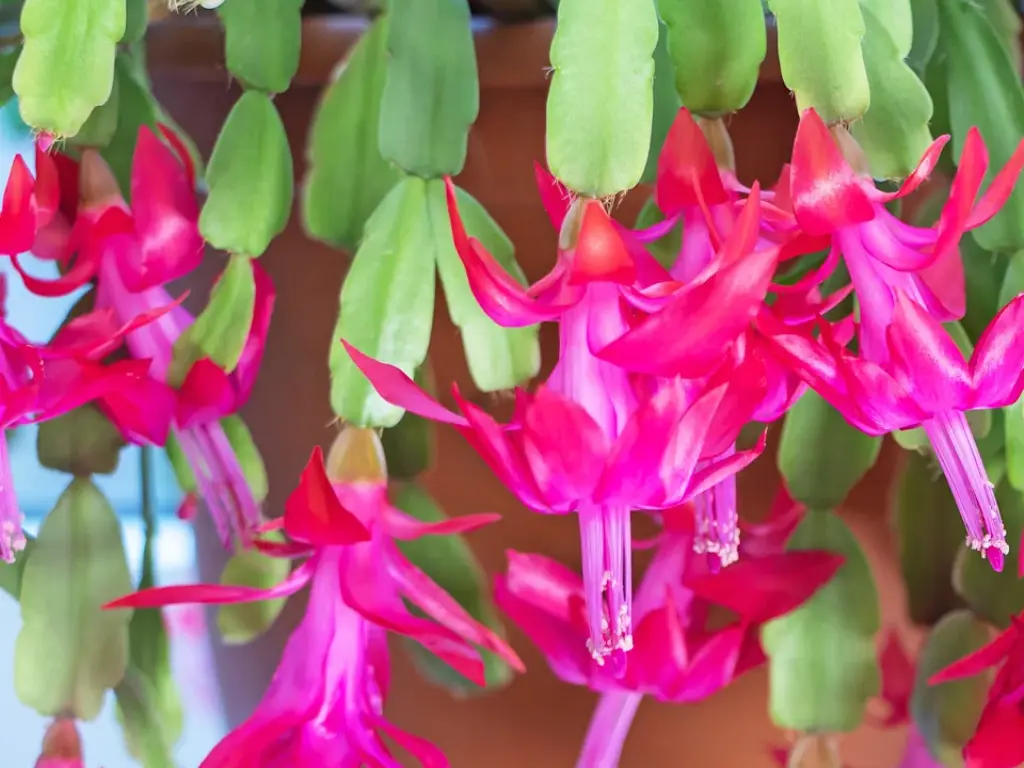
The Christmas Cactus (Schlumbergera) is a tropical succulent that’s a little bit different from the typical cactus you might think of. With its beautiful, segmented stems and soft, drooping appearance, this plant brings a touch of the tropics right into your home. But what truly sets it apart is the colorful show it puts on each year. When it blooms, the plant is covered in bright, beautiful flowers in shades of red, pink, white, or purple.
Unlike traditional cacti that are tough and dry, the Christmas Cactus loves being pampered a little bit. It thrives on moderate care, bright, indirect sunlight, and well-drained soil. What’s even better? It doesn’t mind the cool weather, and in fact, cooler temperatures can help trigger those gorgeous winter blooms. It’s like having your own personal holiday display right inside your home.
It’s also important to note that while this plant is often called the Christmas Cactus, it doesn’t just bloom in December. Depending on the conditions, it might bloom around Thanksgiving, Christmas, or even Easter, which makes it the perfect year-round companion for your home.
Read more: Christmas, Thanksgiving, or Easter? How to Tell Which Holiday Cactus You Have
Planting Christmas Cactus
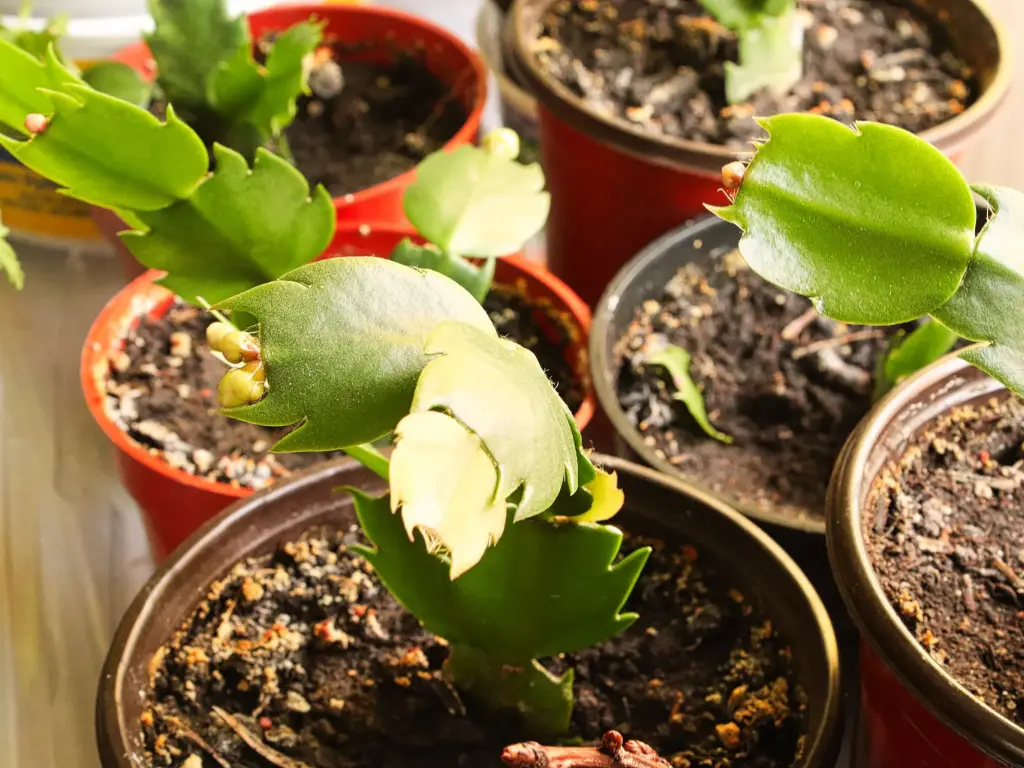
Best Time to Plant Christmas Cactus
The best time to plant or repot your Christmas Cactus is in spring or early summer. This gives your plant plenty of time to establish strong roots before it starts gearing up for its holiday display. If you’re planning to repot, choose a time when the plant is actively growing to help it adjust to its new home.
Choosing the Right Location
The Christmas Cactus thrives in bright but indirect light. Direct sunlight can scorch its soft leaves, so it’s best to place it in a spot where it can soak up plenty of light without the harsh rays. Think about a north or east-facing window or any spot where sunlight is filtered through a sheer curtain.
If you’re growing your Christmas Cactus outdoors (in warmer climates), find a spot with dappled sunlight. This will mimic the plant’s native environment in the cool, shady mountains of Brazil.
Bonus tip: For blooming success, place your Christmas Cactus in a cooler room (50°F to 55°F or about 10°C) for about four weeks before the blooming season. This will help trigger the blooming process.
Soil Preparation
The Christmas Cactus is a fan of well-drained soil, and it doesn’t like its roots sitting in water. A cactus or succulent mix is perfect, but if you want to make your own, just combine regular potting soil with perlite or sand to ensure quick drainage. This type of soil closely resembles the plant’s native habitat, which will help it thrive.
How to Plant Christmas Cactus
Planting your Christmas Cactus is a simple task. Just follow these easy steps:
-
Pick a pot with a drainage hole to avoid waterlogging.
-
Fill the pot with your well-draining soil mixture, leaving some room at the top.
-
Place the plant in the pot, ensuring the top of the root ball sits just below the rim.
-
Backfill the pot with soil, and gently firm it around the roots.
-
Water lightly right after planting. You just need to settle the soil, not soak it.
Container Planting Tips
Christmas Cactus is happy in containers, which makes it a great indoor plant. If you’re planting in a container, choose one that is just slightly larger than the root ball. The plant actually prefers to be a bit root-bound, and too much extra space can cause the soil to stay too moist.
Bonus Tip: If you’re in a colder climate, this is a perfect plant to grow in a container because you can bring it indoors during the winter months when temperatures drop. It’s an easy way to keep your plant safe and healthy year-round.
How to Care for Christmas Cactus
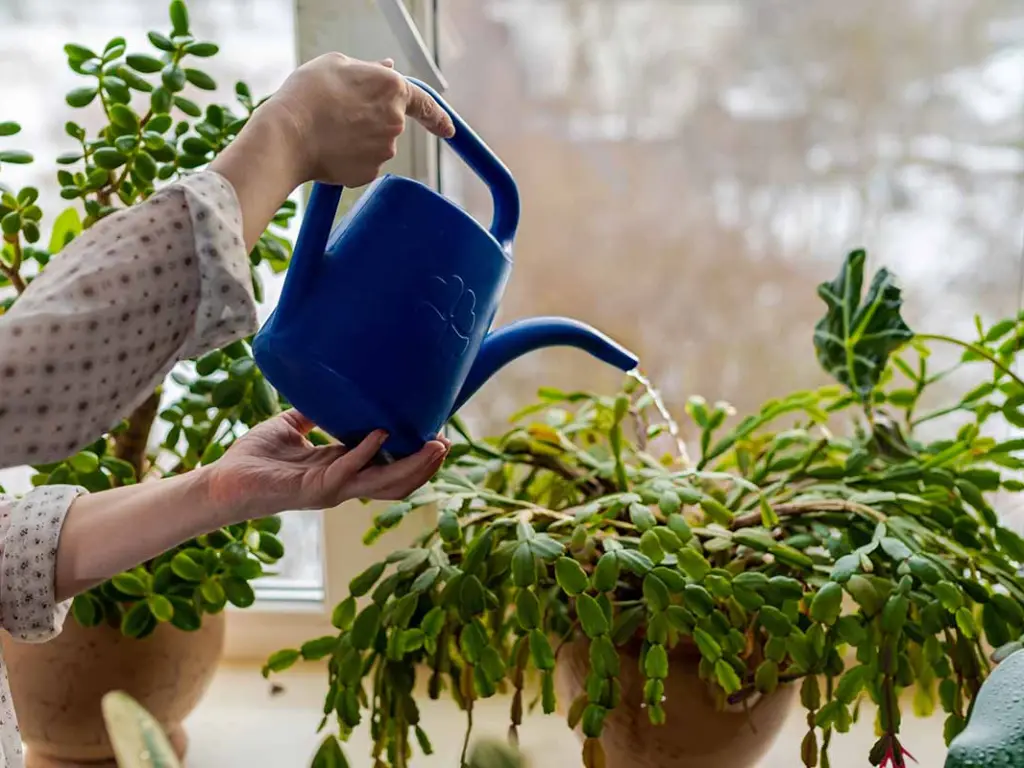
Watering
Think of your Christmas Cactus like a tropical friend – it enjoys regular watering, but it doesn’t want to sit in waterlogged soil. Water your cactus when the top 1-2 inches of soil are dry, but don’t overdo it. During the growing season (spring to summer), water more often, but in fall and winter, cut back. Overwatering is a common problem and the number one cause of plant stress. If you see leaves turning yellow or soft, you might be watering too much.
Pro tip: If your plant starts to look a little sad and droopy, it’s more likely due to overwatering than under-watering.
Fertilizing
During the growing season (spring to summer), fertilize your Christmas Cactus once a month with a balanced liquid fertilizer. In winter, when the plant is taking a break, you can skip the fertilizer. If you want to boost blooms, try a high-phosphorus fertilizer just before the blooming period begins.
Pruning and Shaping
Regular pruning helps the Christmas Cactus grow fuller and encourages more blooms. After it’s finished flowering, trim off any leggy stems or dead flowers. This keeps the plant looking tidy and helps encourage branching. If you’re aiming for a more sculptural, bonsai-like look, you can pinch back the growth tips to shape your plant.
Seasonal Care Tips
During the colder months, treat your Christmas Cactus like a tropical plant – protect it from freezing temperatures and move it indoors. Reduce watering during this time and give the plant as much light as possible indoors. Remember, this plant doesn’t mind cooler temperatures, but it still needs some care to thrive during winter.
Potting and Repotting
Repotting your Christmas Cactus every 2-3 years is a great way to refresh the soil and give it more room to grow. When repotting, choose a container that’s just slightly larger than the current one, as too much space can stress out the plant. Make sure the caudex (the base of the plant) is exposed a little above the soil for better air circulation and a more sculptural look.
How to Propagate Christmas Cactus
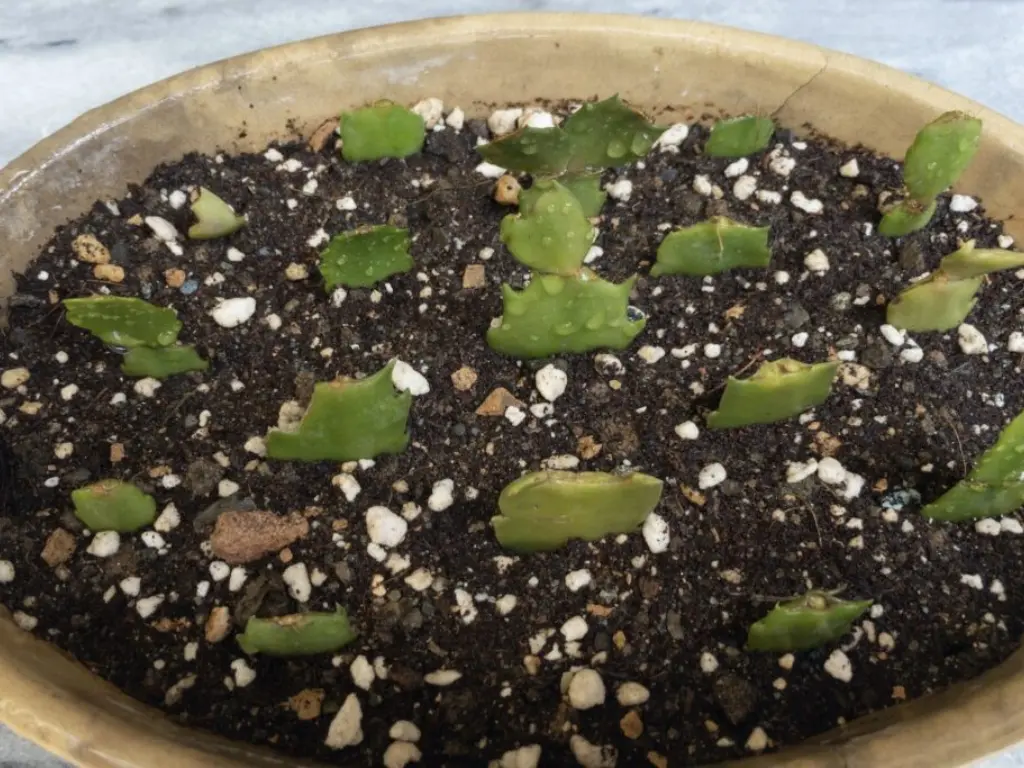
There are a couple of easy ways to propagate your Christmas Cactus:
-
Cuttings: Take a 3-4 inch section from a healthy stem, let it dry out for a day or two, then plant it in moist, well-draining soil.
-
Division: Gently divide the plant by separating the roots into two or more sections, and replant each one in its own pot.
Both methods are easy and can help you expand your collection or share the joy with friends and family.
Read more: How to Propagate Christmas Cactus: Easy Methods for Thriving Holiday Plants
How to Get Your Christmas Cactus to Bloom
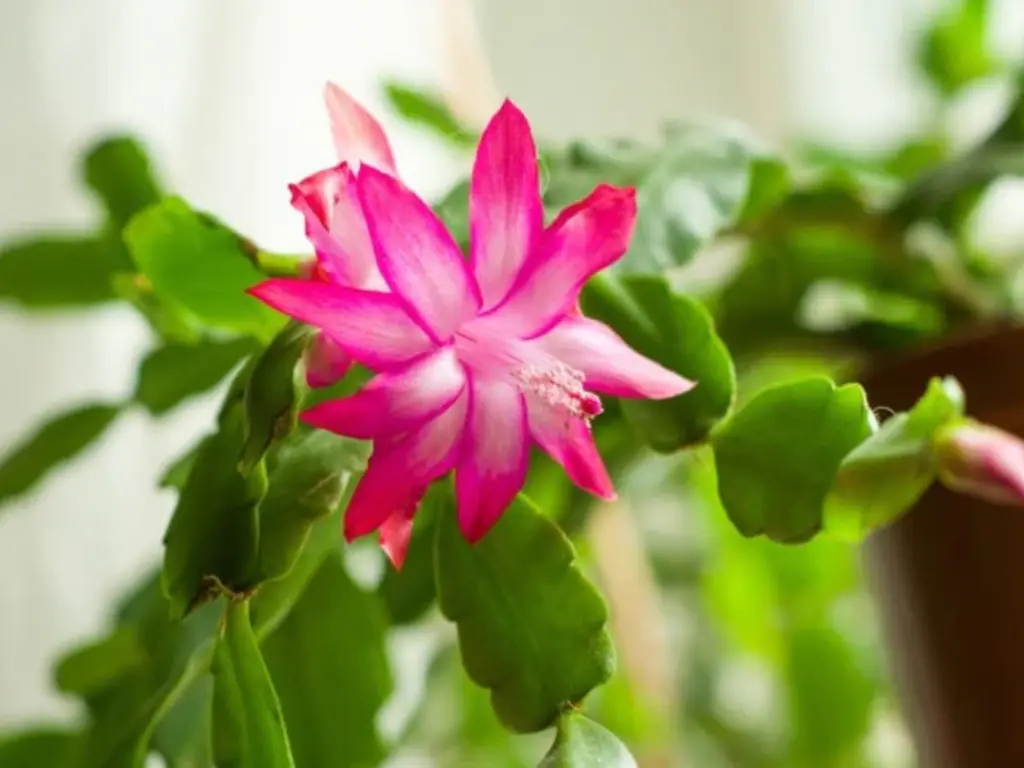
When to Expect Blooms
With the right care, your Christmas Cactus should bloom from late fall to early winter, usually around Thanksgiving or Christmas. In warmer climates, it may bloom year-round, adding a burst of color to your home whenever you need it most!
How to Encourage Blooming
To help trigger the blooms, make sure the plant gets at least 6 hours of indirect sunlight each day. Also, cooler temperatures (50-55°F or about 10-13°C) for a few weeks before blooming will encourage the buds to form. And don’t forget, cutting back on watering in the fall helps the plant focus on blooming, rather than growing more stems.
Troubleshooting
Common Problems
-
Yellow leaves: This usually means your cactus is getting too much water or not enough light.
-
No blooms: Make sure the plant has had a “chill period” (cooler temperatures for about 4 weeks) and check the light levels.
-
Shriveled stems: A sign of underwatering, or the plant might need more humidity.
Pests and Diseases
-
Spider mites: Look for webbing or sticky residue on leaves and use insecticidal soap to treat.
-
Root rot: If the base of the plant becomes mushy, it’s likely overwatered. Repot it in dry soil and cut back watering.
Useful Tips for Growers
-
Rotate your Christmas Cactus weekly for even growth.
-
Clean your pruning tools before use to prevent spreading diseases.
-
Keep the caudex exposed to improve air circulation and showcase the plant’s beautiful base.
Frequently Asked Questions (FAQs)
Can I grow it indoors?
Yes! Christmas Cactus is perfect for growing indoors. Just give it plenty of bright, indirect light, and avoid overwatering, especially during the winter months when it’s in dormancy.
Is Christmas Cactus poisonous?
No, Christmas Cactus is safe for both pets and humans, making it a great plant for households with children and animals.
Can I shape it like a bonsai?
Absolutely! Christmas Cactus is a favorite among bonsai enthusiasts because of its sculptural growth habit. With careful pruning, you can create a miniature tree shape over time.
How long does it live?
With the right care, a Christmas Cactus can live for decades, getting more beautiful and bloom-filled with each passing year. It’s a plant that’s built to last!
Final Thought
Caring for a Christmas Cactus isn’t just about growing a plant – it’s about cultivating a little bit of holiday magic. With its festive blooms, easygoing nature, and long-lasting beauty, it’s the perfect way to add joy and color to your home every holiday season. Follow these simple tips, and you’ll have a flourishing holiday tradition to enjoy for years to come.

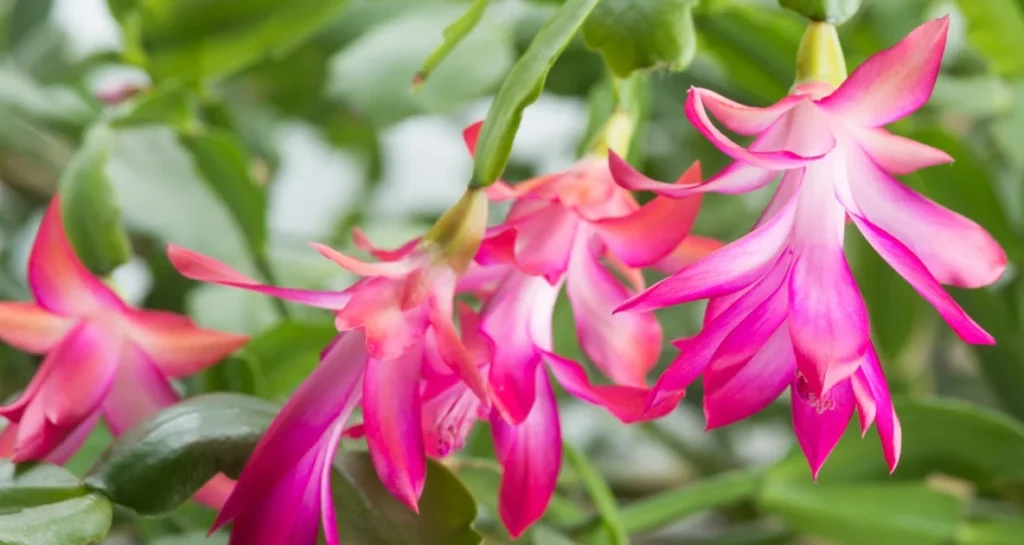
7 Vegetables to Plant in December for a Bountiful Winter Harvest
Winter gardening is a challenge many new gardeners shy away from. But if you’re among [...]
Dec
9 Common Christmas Cactus Problems and How to Fix Them
Have you ever walked past your Christmas cactus and wondered why it suddenly looks sad? [...]
Nov
Swedish Ivy Care: How to Grow a Healthy, Thriving Plant
Have you ever looked at your Swedish Ivy and wondered why the leaves are turning [...]
Nov
Avoid These 10 Garlic Planting Mistakes for Bigger, Healthier Bulbs
Growing garlic at home is one of the most satisfying things a gardener can do [...]
Nov
How to Prevent Christmas Cactus Bud Drop: Tips for a Healthy Bloom
Have you ever noticed your beautiful Christmas cactus (Schlumbergera) starting to lose its buds just [...]
Nov
Discover 7 Stunning Types of Night-Blooming Cereus
Have you ever waited for a flower that only opens at night and then disappears [...]
Nov